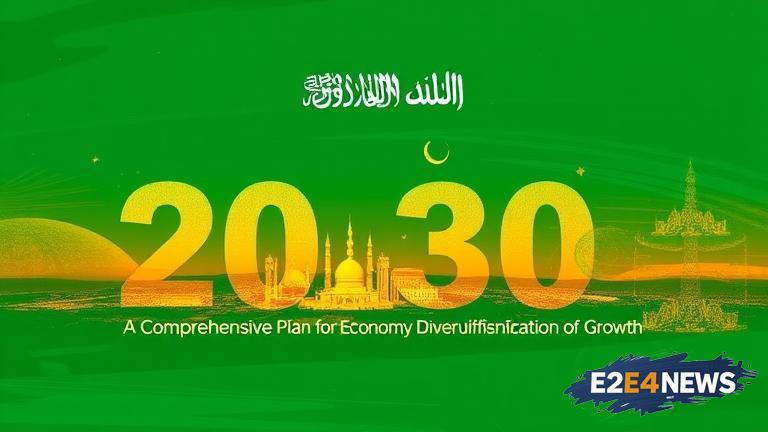Saudi Arabia’s Vision 2030 is a comprehensive plan aimed at reducing the country’s dependence on oil and developing a diverse economy. The plan, which was launched in 2016, is a key part of the government’s strategy to achieve economic growth and stability. The vision is built around three main pillars: to have a vibrant society, a thriving economy, and an ambitious nation. The government has set a number of targets, including increasing the private sector’s contribution to GDP from 40% to 65% and raising the share of foreign investment in the economy from 3.8% to 5.7%. The plan also aims to increase women’s participation in the workforce from 22% to 30% and to reduce the unemployment rate from 11.6% to 7%. To achieve these targets, the government has launched a number of initiatives, including the development of new industries such as tourism, entertainment, and renewable energy. The government has also invested heavily in infrastructure, including the construction of new roads, railways, and airports. In addition, the government has introduced a number of reforms aimed at improving the business environment and attracting foreign investment. These reforms include the introduction of a new bankruptcy law and the establishment of a number of special economic zones. The government has also launched a number of initiatives aimed at promoting entrepreneurship and small and medium-sized enterprises (SMEs). These initiatives include the establishment of a number of business incubators and accelerators, as well as the provision of funding and support for start-ups. The plan has already started to bear fruit, with the economy showing signs of growth and diversification. The tourism sector, for example, has seen a significant increase in visitor numbers, with the number of tourists visiting the country rising from 3.3 million in 2018 to 5.5 million in 2020. The entertainment sector has also seen significant growth, with the number of cinemas in the country rising from zero to over 300 in just a few years. The renewable energy sector has also seen significant investment, with the government announcing plans to generate 50% of the country’s electricity from renewable sources by 2030. Overall, Saudi Arabia’s Vision 2030 is a comprehensive and ambitious plan that aims to transform the country’s economy and achieve economic growth and stability. The plan has already started to show results, and it is expected to have a significant impact on the country’s economy and society in the coming years. The government’s commitment to the plan is evident in the significant investment it has made in infrastructure and the number of reforms it has introduced to improve the business environment. The plan is also expected to have a positive impact on the environment, with the government’s commitment to reducing carbon emissions and increasing the use of renewable energy. In addition, the plan is expected to have a positive impact on the country’s society, with the government’s commitment to increasing women’s participation in the workforce and promoting entrepreneurship and SMEs. The plan is a key part of the government’s strategy to achieve economic growth and stability, and it is expected to have a significant impact on the country’s economy and society in the coming years. The government’s commitment to the plan is evident in the significant investment it has made in infrastructure and the number of reforms it has introduced to improve the business environment. The plan is also expected to have a positive impact on the environment, with the government’s commitment to reducing carbon emissions and increasing the use of renewable energy. The plan is a comprehensive and ambitious plan that aims to transform the country’s economy and achieve economic growth and stability. The government’s commitment to the plan is evident in the significant investment it has made in infrastructure and the number of reforms it has introduced to improve the business environment. The plan is expected to have a significant impact on the country’s economy and society in the coming years, and it is a key part of the government’s strategy to achieve economic growth and stability.





